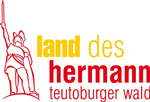Hiking from A – Z
Questions often arise, especially for beginners. What equipment do I need? Or which tour should I hike? On this page we give you a short overview of terms and things to consider when hiking and everything, what hiking involves. This little A-Z guide will certainly help you on a successful and exciting hike. You can find further information under: www.wandern.de
Please never leave the marked hiking trails and avoid shortcuts. Especially if you do not know the surroundings.
The lowest layer should be tight-fitting, transport moisture well to the outside and, depending on the time and place of use, also warm up. The so-called functional underwear should be made either of breathable synthetic fibres or of natural fibres such as merino wool, whereby the latter keeps neither damp nor warm and does not absorb odours. Depending on the climatic conditions, the second layer is either a T-shirt, shirt or blouse or a jacket made of fleece or merino wool, which keeps the warmth on the body. The counterpart is accordingly a hiking or climbing trousers made of functional material and in a thickness or lining adapted to the climate.
The top layer is wind- or waterproof clothing such as rain trousers, hardshell or softshell jacket, rain poncho or gaiters. This layer ensures that the developed warmth stays on the body, the hiker does not get wet and that in warmer weather heat and sweat still come out. With a competent expert advice in the appropriate outdoor shop it is no problem to orientate the advantages and disadvantages of the different models, materials and price ranges and to find something suitable.
There are different types of compasses. The simplest are pocket compasses, which consist only of the housing filled with a liquid, in which the needle is located. In addition, there are ruler and mirror compasses, for example, which can be used to determine the exact degree of the angle of view or direction of travel. With these, it is possible to work more precisely, but a little training is required to learn how to use them.
It is always important to keep the compass straight or horizontal and steady, so that your position and direction can be determined exactly. With the help of a map of the surroundings, the right way can always be found quickly, independent of electrical engineering and even independent of trail markings.
The sporting and sometimes psychological condition is the basis on which a hike is built. For short distances and day hikes, it plays a lesser role and is only noticeable when the ascent is strong. However, on multi-day tours and difficult routes it is indispensable and should never be overestimated. If you are not sure where you stand in terms of fitness, you should do at least one training hike before starting such a tour to be able to assess your limits.
If you notice that your own condition is rather modest, you can start with simple training rounds and improve significantly with slowly increasing intensity and duration over time. A certain basic condition is very important, especially on long-distance hikes or mountain tours – especially in areas where there is no possibility of premature termination of the hike on the way. When mountaineering, a failure of the condition can even lead to serious dangers. Many people underestimate on the mountain that even the descent still requires a certain amount of strength, which is why especially on these tours one’s own physical condition has to be assessed very carefully in advance.
Behavior in case of emergency:
Recognise the situation, remain calm, take over first aid, stay with the injured and talk to them, try to calm them down, ask other hikers to get help.
When you buy hiking boots, you should pay particular attention to a good fit. Walk around with them already in the shop. If you notice an uncomfortable spot somewhere that could make walking difficult, then it is advisable to try a different pair of walking shoes.
The technological progress has also reached the field of hiking in the form of GPS devices. Almost all hiking trails are recorded in the topographical maps of the devices, making it almost impossible to get lost. There is everything from the inexpensive basic device with a roughly schematic map display for emergencies to the expensive touchscreen GPS device with a colour display and multi-layer map, everything your heart desires.
A small disadvantage is the dependence on batteries, accumulators and perfectly working technology, if one only relies on the devices. A big advantage is beside the enormous space saving compared to the usual paper cards also the precision and the many features of the devices. For example, in many models it is possible to record the hikes and to follow them afterwards on a map, to save and evaluate tours. This type of processing is particularly valuable for hikers who are curious to know how many metres in altitude and kilometres they have covered. It also saves the hiker from having to measure or search on maps in book or paper format, as exactly one destination can be reached except for the coordinates.
The number of meters of altitude difference indicates how many meters of uphill or downhill gradient are to be mastered on a certain route length. This information is particularly important when planning the stage lengths, as ascents and descents are a much greater challenge for your fitness, muscles and joints. While ascending stretches are mainly a strain on the muscles, the descending stretches put more strain on the joints. The length of the route and the nature of the route are decisive factors in this respect.
.
While one gains or loses altitude relatively leisurely on firmly built serpentines or loops, washed out streams, scree fields and woodlands as well as large differences in altitude are much more strenuous over short distances. Stages where the route is characterized by a constant change between ascents and descents should not be underestimated either. Even if the differences in altitude are not necessarily great, the body is still forced to change frequently and tires more quickly than on long, even gradients or flat stretches.
As useful as insects are in the environment, they are unfortunately also annoying when they bite or rob us of our well-earned sleep with their buzzing and buzzing. Insect bites are also not to be underestimated because of the danger of infectious diseases and one should protect oneself from the annoying little animals during hiking and at night.
To protect the skin from stitches and thus also from the risk of disease, there are various possibilities. On the one hand, there is insect protection for clothing, with which you can impregnate your hiking equipment. Many insects can also sting through textiles, so an appropriate agent will prevent them from settling on them at all. The contained agents are often scents that deter the animals. Some manufacturers also offer pre-impregnated clothing, whose protection remains after washing. Alternatively, there are also very densely woven and thus puncture-proof clothes, which are often warmer, however.
There is no such thing as the ideal hiking time in itself. It depends on what demands are made on a hike and what personal preferences you have. You should ask yourself beforehand whether you would like to make many new contacts, for example, or whether you prefer to keep to yourself and whether you prefer hot and dry summer days, the mild but changeable spring or autumn, or the cold peace of winter.
For many travel areas, spring and late summer are the best times to travel, when the hiking trails are not yet overcrowded, but still visited by fellow hikers and the weather is neither in one extreme nor the other. If the hike is for several days or longer and you want to stay overnight in hostels or huts at the end of the day, you need to clarify in advance when they will be open. Many lodgings are closed, for example, during the winter months.
If you are travelling with a hiking guide, please follow his instructions. He is responsible for the group and you and knows where difficulties can occur.
On footpaths that run outside the mountains, it is difficult to find standardized information about the difficulty. Nevertheless, many tours are described on the Internet or in travel guides. There you can find information about the condition of the path, altitude difference, markings and infrastructure. On the basis of this information or with the help of awards such as the predicate hiking trails, the degree of difficulty of a hike can be estimated in advance and compared with the personal fitness.
Long-distance hiking trails are hiking routes that lead from a starting point to a destination over long distances and often across national borders. The route is divided into more or less flexible stages, which are based on the villages, accommodation and refreshment facilities along the way. It is not unusual for several hundred or even thousand kilometres to be covered. In this age of technological progress and the most varied means of transport, it is still possible to experience the impressive distances that man can travel on his own feet.
This type of long-term hiking routes is internationally widespread, well-known and popular and, especially in Europe, established in an extensive network of long-distance hiking trails. There are twelve major long-distance hiking trails in Europe, which are designated E – 1 to E – 12. Due to its central European location, Germany is a kind of junction through which many of these trails run. Over a total of more than 60,000 kilometres, these trails connect almost all European countries from southern Spain to northern Scandinavia. The various trails in America as well as the many pilgrim paths are also part of the long-distance hiking trails.
To help hikers with their orientation, countless hiking trails are now marked with signs. There are nationally valid signs such as the yellow scallop on a blue background for the Jacob’s Way or the red-white-red marking of the European long-distance hiking trail E – 5. The regional hiking trails are often also marked by colourful plaques on trees, pillars, signs or lanterns. In addition, for orientation in hiking areas, there are also simple distance indications to surrounding villages or places of interest, which are attached to classic signposts or, as in the Siebengebirge, are drawn on large blocks of stone located at the relevant crossroads.
The weather and sometimes brazen thieves who want a souvenir make sure that the continuous marking of the routes must be permanently checked and maintained. This includes, for example, tracing the location information and, if necessary, replacing the missing plaques. Also due to new roads, conflicts with private owners over whose land a route runs or for reasons of nature conservation, routes are occasionally changed. In such cases, a clearly visible and continuous marking is essential to keep hikers on the right track at all times.
The special spirit that draws pilgrims to these paths makes the difference between a walk and a pilgrimage. While leisure hikes usually focus on the landscape or the sporting aspect, pilgrimages also include an inner reflection in addition to these factors.
During a pilgrimage, people often seek peace and seclusion from everyday life. Many of the pilgrims have a concrete question or problem which they want to solve by completing a pilgrimage with enough distance to the respective situation. Others use the pilgrim paths to express their faith and to reach a monument of religious history which is important for them.
Quality hiking trails belong to the various predicate hiking trails and are awarded by the German Hiking Association. To this end, they are assessed according to nine basic criteria and twenty-three additional selection criteria. In this way, the assessment of the hiking trails is at least partially standardised and made comparable. In order to become a so-called “Quality Trail Wanderbares Deutschland”, a certain number of points must be achieved after examining the respective trail, whereby the different criteria in the evaluation each have different weightings.
Basically, this is divided into five different types of evaluation. In the aspect of trail format, the nature of the trail is examined, the hiking guide system evaluates the marking and routing, the point Nature looks at the scenic surroundings, the point Culture accordingly at the cultural highlights and finally, under the aspect of civilization, the infrastructure along the trail is examined. Whoever walks an excellent quality hiking trail can be sure that he/she will find a natural, easily walkable, varied and interestingly designed hiking trail. In comparison to other routes, these trails also offer sufficient public transport connections or refreshment facilities.
Make sure you buy good quality hiking socks. You should always buy hiking socks two sizes smaller than your normal shoe size. This makes hiking socks a “second skin”, so to speak.
For multi-day stages you should start slowly with the stages. In the first week the stages should not be longer than 20 km. After two to three weeks, your performance will improve, so that you can increase to 25 – 35 km per day. If you hike for several weeks, you should allow for about one day off per week.
In addition to the first aid kit, you will need other utensils, such as
– Suitable food (nothing that could melt or is sticky)
– Enough to drink
– underwear/ underwear to change
– Plastic bag for packing waste etc.
– hiking map / compass / radio
– Flashlight
– Replacement shoelaces
– pocket knife, matches, lighter
– Special tip: in the summer a swimming trunk
The group is only as strong as its weakest link. So please set your tempo accordingly. Depending on your ability, you should take a short drinking break every hour and every two hours a longer rest.
Hiking is sport. Therefore you should start at a slow and leisurely pace. After about 30 minutes your body is warmed up and you can change to a normal walking pace.
In contrast to hiking, walking is usually a little slower, more relaxed and less sporty. However, the terms are not sharply separated from each other, so that a brisk walk and a quiet hike are quite comparable. But a walk is rather a short distance of maximum one or two hours duration that is done at a leisurely pace and without any strong ascents and descents. Accordingly, no special equipment is necessary for a walk and everyday clothes, shoes and little or no provisions are sufficient.
Also when choosing the route, a walk is often more spontaneous, because instead of hiking trails, your own apartment block, the city or a nearby park or forest is sufficient. Due to the brevity of the route, no marking or infrastructure is necessary for hikers, although hiking trails are of course also very popular with walkers and are used frequently. However, the aim of walking and hiking is usually the same – to get some exercise in the open air, get away from it all and find peace and quiet.
Hardly any other long-distance hiking trail is as well known in Germany and worldwide as the Way of St. James. Named after the apostle Jacob, whose bones lie in Santiago de Compostela in Spain, this path leads from all conceivable starting points (but mostly in Europe) to Galicia in western Spain. Along with the route to Jerusalem and Rome, this path is one of the three great Christian pilgrimage routes. Which does not mean that this experience is reserved for believing Christians only. On the contrary, the Way of St. James brings together people of all nationalities and faiths who share this formative experience. There is hardly a pilgrim who does not tell of new friendships and touching destinies that he or she has encountered during the pilgrimage.
In any case, make sure to check before hiking. In the mountains the weather can often change very quickly. Weather reports or tourist offices will give you information.




